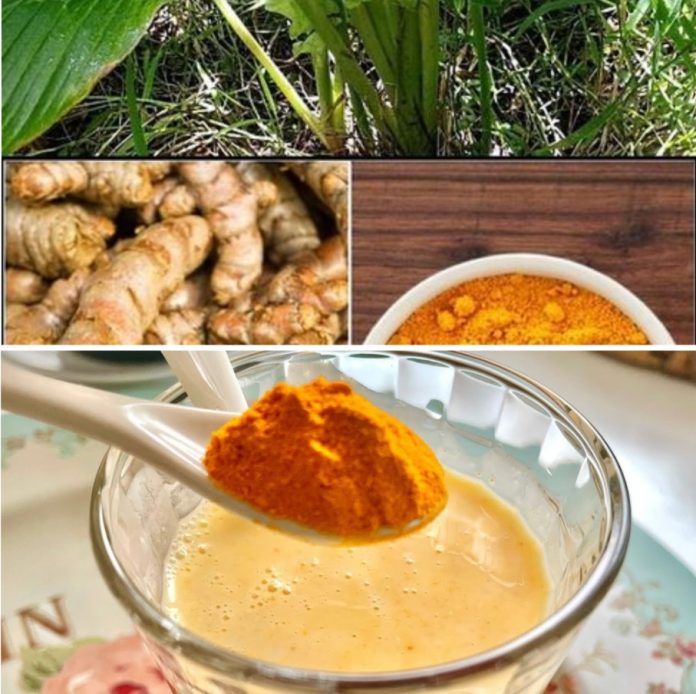For centuries, turmeric has been celebrated as a powerful spice used for medicinal purposes, particularly in traditional Indian and Chinese healing systems. In recent years, science has begun to back up the claims made about turmeric, particularly regarding its potent anti-inflammatory and antioxidant properties. This bright yellow spice, derived from the root of the Curcuma longa plant, owes its healing abilities primarily to curcumin, its active ingredient.
With a growing number of people turning to natural remedies for healing and recovery, turmeric has emerged as a front-runner for supporting holistic well-being and aiding in the recovery process.
From reducing inflammation and protecting cells from oxidative stress to enhancing brain and heart health, turmeric can offer a wide range of benefits. However, not all turmeric is created equal when it comes to effectiveness. In order to maximize the health benefits, it is essential to understand how to properly consume turmeric to enhance its bioavailability, or the body’s ability to absorb and use the nutrients. This article will guide you through the best ways to use turmeric and provide tips for unlocking its full healing potential.
The Powerful Benefits of Turmeric
- Anti-Inflammatory Effects
Turmeric’s most well-known benefit is its ability to reduce inflammation. Chronic inflammation is a major contributor to many diseases, including arthritis, heart disease, and metabolic conditions. Curcumin has been found to block molecules that cause inflammation, providing relief for conditions like rheumatoid arthritis and inflammatory bowel disease. - Antioxidant Protection
Curcumin is also a powerful antioxidant, helping to neutralize free radicals and protect the body from oxidative stress. This property makes turmeric particularly valuable in fighting chronic diseases such as cancer and Alzheimer’s, both of which have been linked to oxidative damage. - Brain Health Boost
Turmeric is believed to enhance cognitive function by increasing levels of brain-derived neurotrophic factor (BDNF), a growth hormone crucial for brain health. Low levels of BDNF are associated with depression and neurodegenerative diseases. By boosting BDNF, turmeric may help in preventing mental decline and fostering better brain function. - Supports Cardiovascular Health
Curcumin also contributes to heart health by improving the function of the endothelium, the lining of your blood vessels. Additionally, its anti-inflammatory and antioxidant properties reduce the risk factors for heart disease, such as inflammation and oxidative stress.
Maximizing Turmeric’s Absorption: The Right Methods
While turmeric is a powerhouse on its own, there are ways to increase its efficacy and absorption in the body. Curcumin, the active compound in turmeric, isn’t easily absorbed on its own, but a few simple strategies can help ensure you’re getting the most out of this healing spice.
- Pair Turmeric with Black Pepper
One of the easiest and most effective ways to boost curcumin absorption is by consuming it with black pepper. Piperine, a natural compound found in black pepper, has been shown to increase curcumin absorption by as much as 2,000%. Without piperine, much of the curcumin would pass through the digestive tract without being absorbed. - Incorporate Healthy Fats
Curcumin is fat-soluble, meaning it dissolves in fats rather than water. To enhance absorption, consume turmeric with a source of fat. This could be in the form of coconut oil, olive oil, avocado, or fatty fish. This not only improves bioavailability but also allows curcumin to be stored in your body’s fat tissues for slow, sustained release. - Heat It Up
Heating turmeric can help improve its solubility, which in turn makes it easier for the body to absorb. Incorporating turmeric into heated recipes like soups, teas, and curries can help you get the most out of its benefits. Just be sure not to overheat it, as excessive heat may degrade some of the beneficial compounds.
Practical Dosage Recommendations
The key to reaping the benefits of turmeric is consistency and moderation. The general recommended dosage for health benefits ranges between 500-2,000 milligrams per day, with curcumin making up 5-10% of the total. If you’re opting for supplements, it’s important to choose ones that contain piperine for enhanced absorption, or are formulated with fats to increase bioavailability. For best results, start with lower doses and gradually increase based on your body’s tolerance and health needs.
Safety and Precautions
While turmeric is generally considered safe, there are some precautions to keep in mind. High doses of turmeric may cause gastrointestinal discomfort, such as bloating or diarrhea. It’s also essential to consult a healthcare provider before adding turmeric to your regimen, especially if you’re taking medications such as blood thinners or diabetes medication, as turmeric can interact with these.
For topical use, turmeric’s anti-inflammatory and antimicrobial benefits extend to treating skin conditions like eczema or acne. Simply mix turmeric powder with a carrier oil, such as coconut or jojoba oil, to create a soothing paste. However, be aware that turmeric can stain skin and clothing, so it’s best to do a patch test before applying it to larger areas.
Conclusion:
Embracing the Healing Power of Turmeric
Turmeric has the potential to be a game-changer in your journey toward whole-body recovery. By understanding the best ways to consume and utilize turmeric, you can unlock its full therapeutic potential, supporting everything from inflammation reduction to brain and heart health. Incorporating this golden spice into your daily routine, whether through diet, supplements, or topical applications, offers a natural and effective way to enhance your overall well-being.
However, as with any supplement, it’s important to use turmeric wisely and consult a healthcare professional if needed to ensure it complements your personal health needs. With the right approach, turmeric can be a powerful ally in promoting recovery and long-term health.
Source of the picture : Barbara O’Neill










